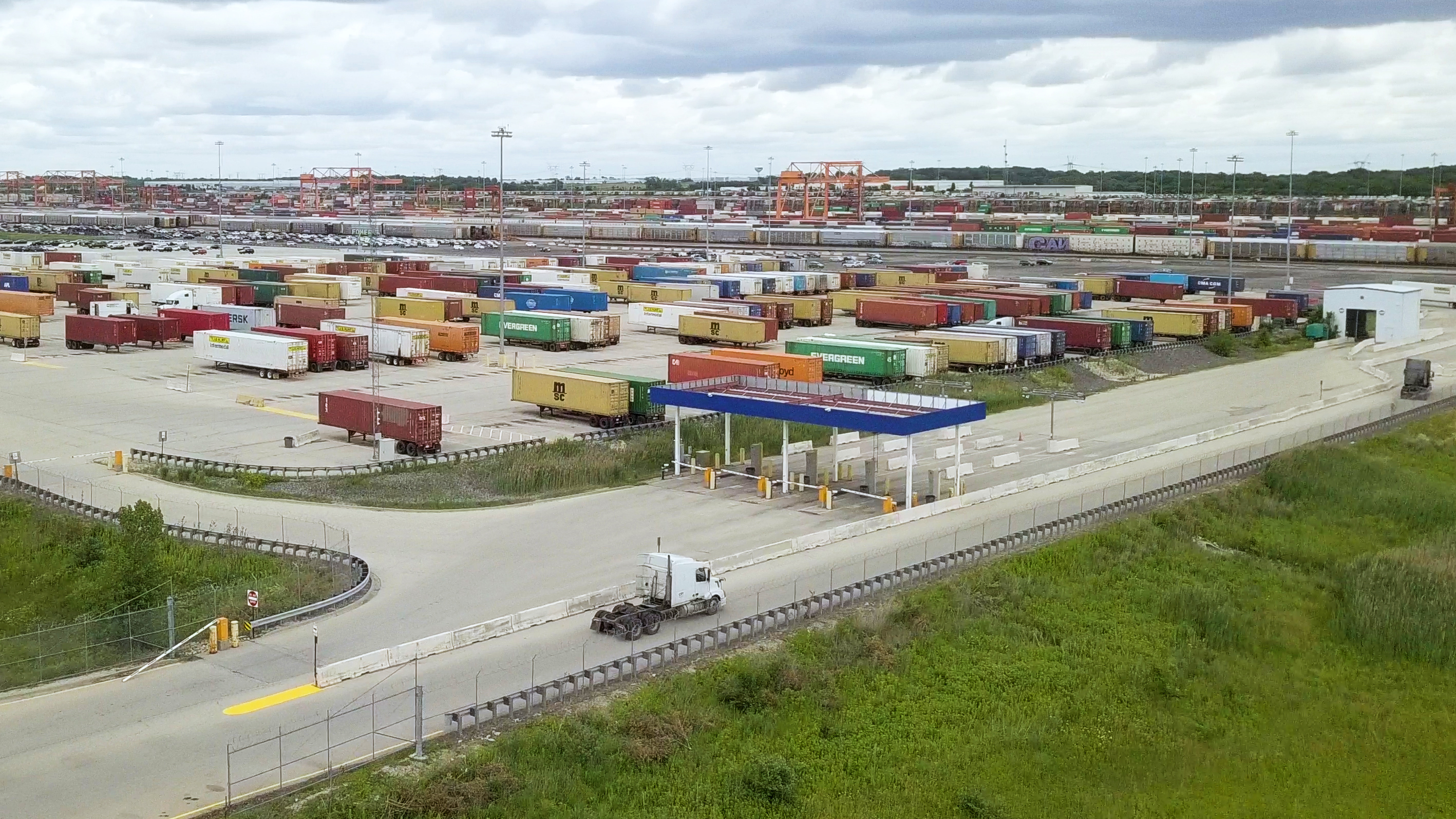A Community-Friendly Freight Mobility Plan for Will County
Navigating a Complex Freight System
More than 3 million shipping containers flow through Will County, Illinois, each year, making it the largest inland port in North America. The county lies south of Chicago at the intersection of several highly traveled routes that help move goods across the country—and even the globe. In recent years, many have recognized the potential of Will County’s strategic location and its capacity for freight-related growth. Freight volumes in Will County continue to climb in a network that is reaching capacity in many places, while e-commerce drives the construction of new warehouses and distribution centers. These developments have produced unprecedented growth in freight jobs and traffic in the last 15 years, in turn challenging local infrastructure and resources and leaving residents concerned about the impacts on their quality of life.
To help the county maintain a reliable, efficient transportation system that can support future growth, CDM Smith led a team in developing the Will County Community Friendly Freight Mobility Plan. The multimodal plan identifies key freight issues and prioritizes strategic projects and opportunities to accommodate existing freight, distribution and logistics operations.
The Details are in the Data
CDM Smith’s team poured over several data sources to fully understand freight movement in Will County, its impacts on the workforce and the strain on local infrastructure and resources. “Freight is an economic engine for Will County, so it was important to identify ways to improve the system without negatively impacting quality of life for residents—which can be a difficult balance to find,” said Jacki Murdock, CDM Smith’s lead planner.
CDM Smith’s team leveraged current data from TRANSEARCH, the American Trucking Research Institute and other sources, modeling it at a county level to analyze truck traffic, land use and freight bottlenecks along major highways and interstates. “We wanted to develop a comprehensive dataset that told the story of freight in the county,” said CDM Smith vice president and project manager Chris Nazar, AICP. “The data needed to be as current as possible, which was a challenge, as the landscape can change tremendously within a short period of time with such rapid industry growth.” Nazar, Murdock and the team also conducted interviews with freight businesses to better understand their perspective on infrastructure needs and deficiencies on the local road network.
“We had to be extremely thorough in the engagement and feedback process,” said Murdock. “Stakeholder involvement and feedback was a source of data that was key to making this a truly community friendly freight plan.” In addition to these analyses, CDM Smith’s planners hosted forums, public meetings and interviews and sent surveys to engage communities, residents, carriers, haulers, manufacturers, distributors and third-party logistics providers to collect valuable information that would guide future freight policies and programs. The results were key to creating a complete picture of freight growth, land use and workforce conditions in Will County.
Will County’s workforce is growing alongside the freight industry. We knew developing a workforce action plan was key to Will County’s future as a freight hub.
Driving Freight Forward
Leveraging relevant datasets helped Will County understand industry growth, optimize limited funding resources, evaluate land use to prioritize projects, outline strategies to strengthen workforce development and establish project prioritization criteria to help maximize a return on investment. “The team developed a holistic freight evaluation tool that uses spatial techniques and geographic information systems data to pinpoint areas where infrastructure improvements will increase efficiency while protecting community and environmental resources,” explained Murdock. “Projects were evaluated based on safety, mobility, economic competitiveness, community and environmental sensitivity.” Using these criteria, the county identified projects critical to improving freight movement and quality of life.
The plan also sought to maximize land use efficiency by identifying clusters of freight-related land that generate truck traffic. The team created a future land-use map, coordinating with local municipalities and using spatial analyses to define the clusters. This data helped locate areas for truck parking, define protective zones for agricultural areas and pinpoint clusters for freight development.
With freight-dependent industries representing more than half of all private sector jobs in Will County, employment within the transportation, delivery and logistics (TDL) industry continues to grow. “Will County’s workforce is growing right alongside the freight industry,” said Murdock. “We knew developing a workforce action plan was a key success factor to Will County’s future as a freight hub.” The team identified strategies to attract, retain and build the freight: creating a core partnership of TDL businesses to stimulate collaboration and address common issues; raising awareness of the TDL industry through various workforce training programs and partnerships; communicating clear development paths and better-quality jobs for the TDL workforce; and, increasing access between population centers and TDL employment centers.
A New Way of Freight Planning
Reflecting on the project and plan, Murdock sees an opportunity for other major U.S. counties to replicate Will County’s approach. “This plan reflects a new way of freight planning that considers impacts to the economy, the workforce, the community and the environment.” By looking beyond where freight is moving and considering freight as an economic engine, she said, planners can zone in on what is needed to accommodate industry growth without costing residents their quality of life. “There’s no template for a plan like this. It’s all about listening to the county’s needs, thinking outside the box and choosing projects that are unique.”

I’m inspired to be on a team that continuously develops leading-edge client solutions to address transportation challenges.










